Terminology: Bound Headstocks
Hey ChatGPT, give me a clear and concise definition of guitar binding.
…..
“Guitar binding is an ornamental strip of plastic, wood, or other material added to the edges of an instrument’s body and neck. It serves a dual purpose: it protects the edges from dings and cracks and provides a decorative aesthetic element to the guitar.”
OK, thanks ChatGPT! So…that means that a bound headstock—the topic of this post—is a headstock that has been bound. The end?
I mean, technically yeah. But we’re here to talk about headstock binding on Rickenbacker guitars in specific which, despite how rare it is, has a bit (but just a bit!) more history than you might know. So let’s get started!
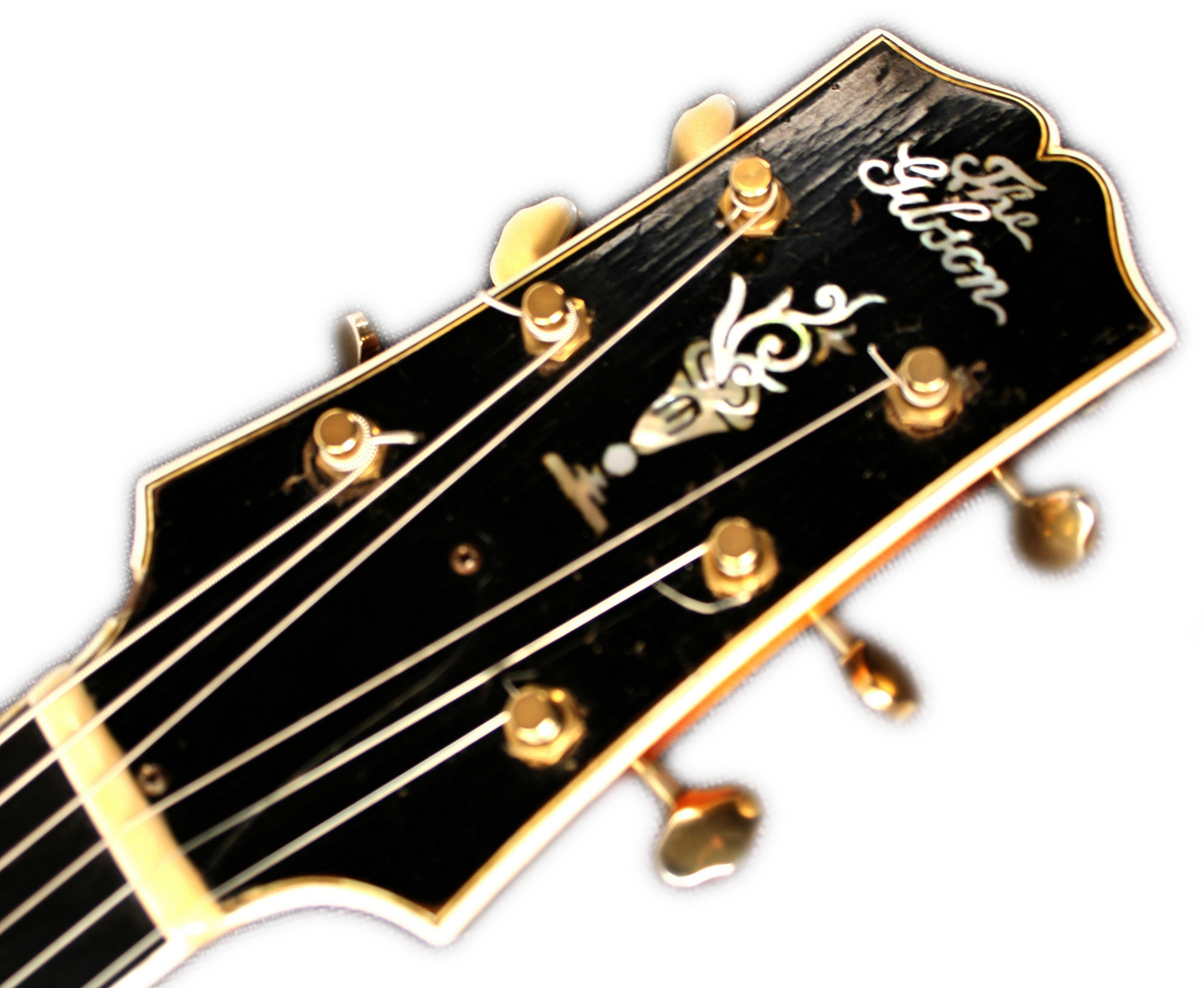
When you picture a bound headstock you probably think of a Gibson guitar, as a bound headstock has been a signifier of a “deluxe” Gibson model since the 1920s. Rickenbacker’s history isn’t nearly as long—or as deep—but there’s been more than one model to feature a bound headstock, so let’s run through them!

As near as I can tell the first “modern era” Rickenbackers thusly equipped were Roger Rossmeisl’s hand built 390 prototypes from 1957 and 1958. Rossmeisl really pulled out all the stops on the first of these deluxe archtops: hand carved “German carve” top and back, 9-piece neck, 4-ply body binding (two plies of checkered, two plies of white), white over black triangle inlays, and then there’s the headstock.
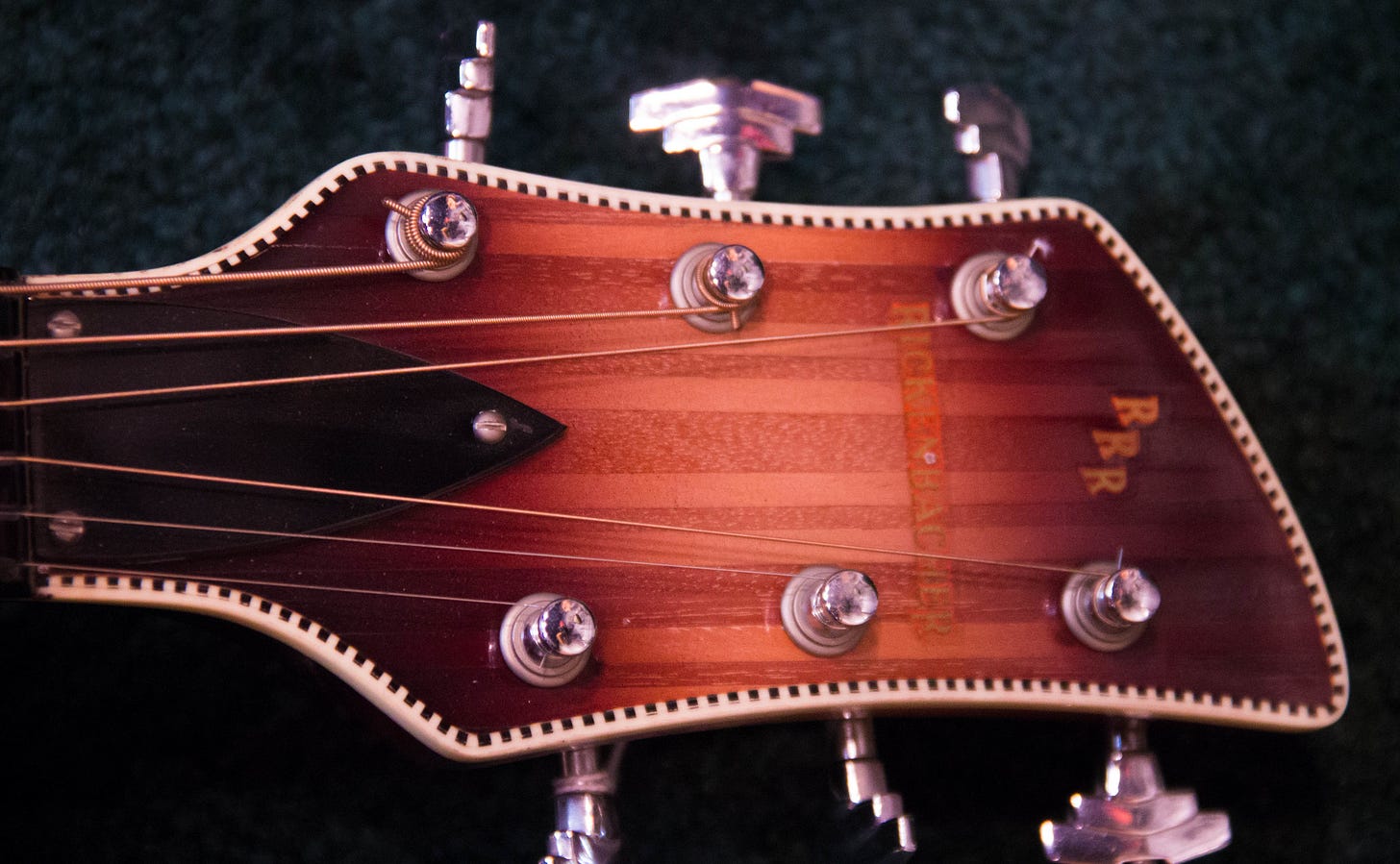
15 pieces, Grover Imperial tuners, and 2-ply checkered binding. Fancy! Also note that his RRR monogram is higher than the barely legible Rickenbacker (the decal used on lap steels) branding!
But it was just a prototype. Not a production model. Although the headstock binding was clearly an intended part of the design for the guitar as the next 390 prototype—built the next year in 1958–had it too.
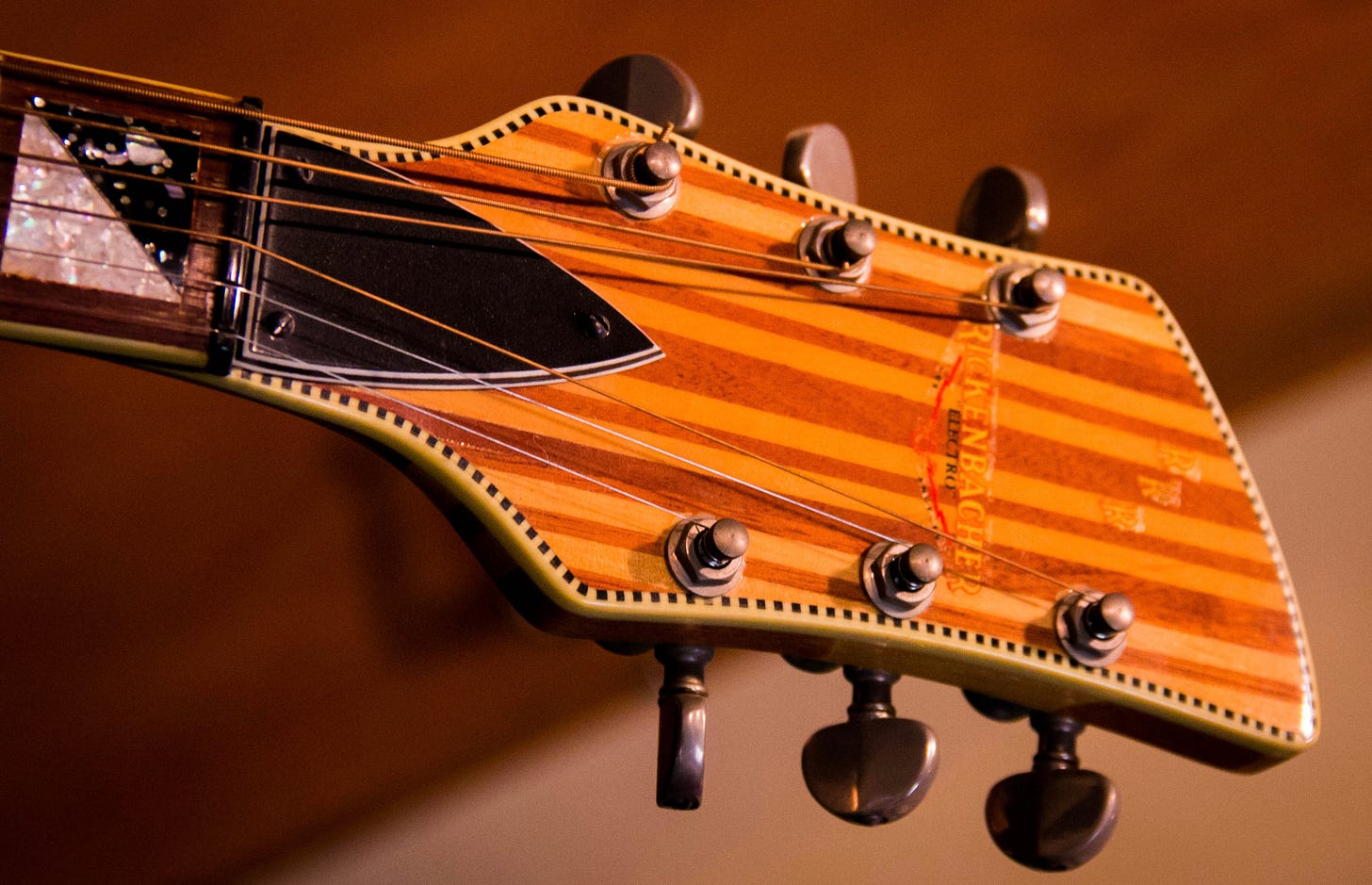
Alas, the 390 never made it into production. But the IDEA of headstock binding for a deluxe guitar had been planted, and would be revisited several times over the years—even if it never became standard like body binding.
But there’s another Rossmeisl prototype we should discuss when talking about bound headstocks—and it’s one that deserves and will eventually get its own writeup. Behold the El Toro!
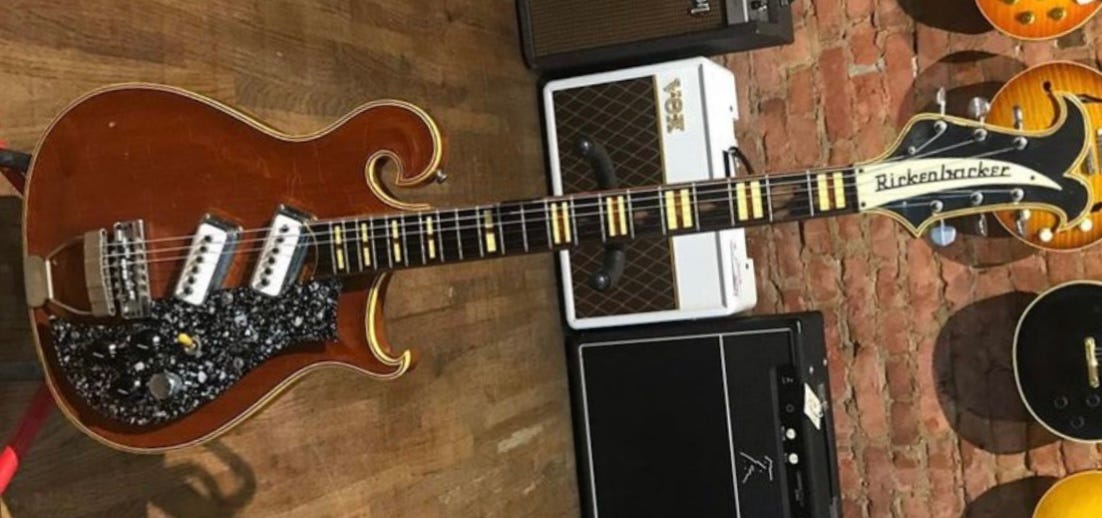
Yes, that is a “real” Rickenbacker, hand built by Rossmeisl in 1958. This German carved solidbody fever dream was shown at trade shows in 1958 and then disappeared until 2019 when it showed up at Emerald City guitars in Seattle. You want a bound headstock? Check this bad boy out!

Those prototypes we have some details on, but there are others we don’t know much about. Like check out this F-body husk with f-holes and a very strange, bound headstock hanging on the wall in the factory museum.
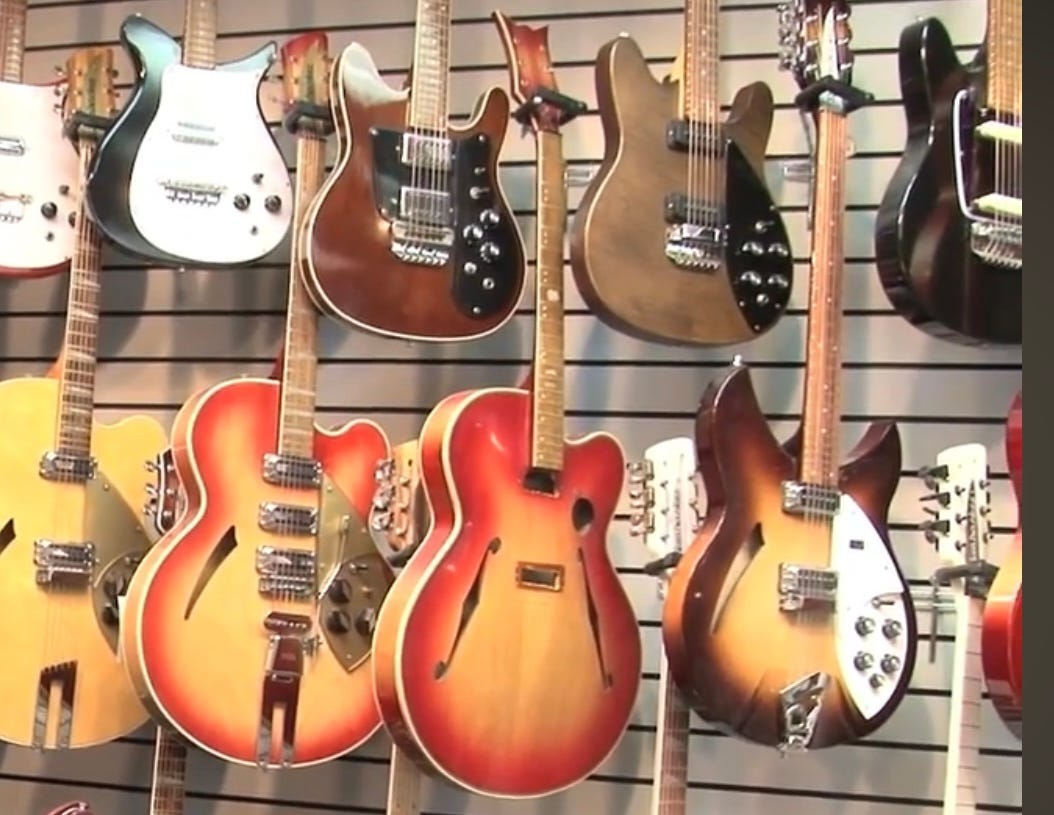
The point of all this is that the idea existed and we have some prototypes to prove it. So when did a bound headstock become a “production” feature? Well, it would take ten years, and its first appearance would be on an…unusual model.

The 1968 Banjoline was a unique instrument, designed by Eddie Peabody and kind of a cross between a banjo and a mandolin—thus the name. It came in standard (6005) and deluxe (6006) versions. And the 6006 came with a neat bound headstock.
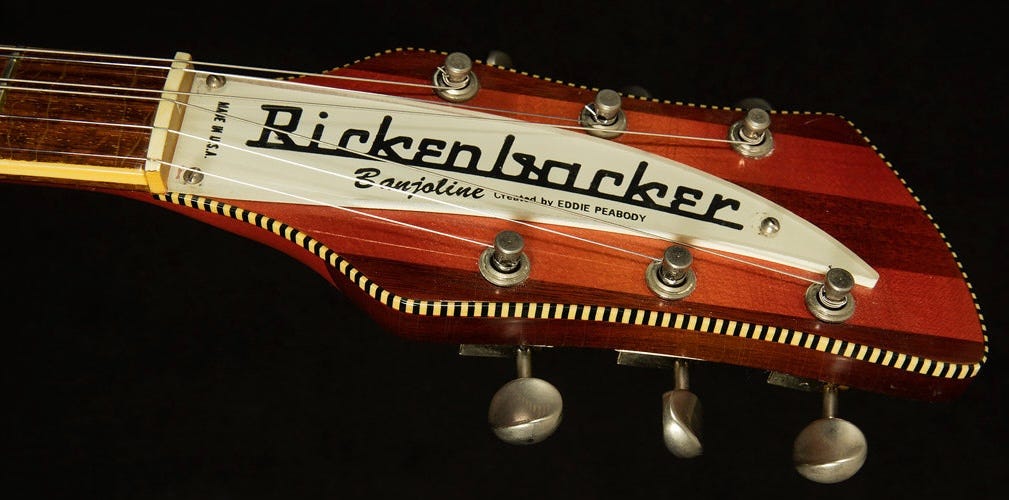
What is especially interesting about this one that it ONLY utilized checkered binding—when checkered binding appears on the bodies it’s usually 2-ply checkered and white. It’s a very unique look! Didn’t last long though—the model, that is—the Banjoline twins were a one-year-only model. But we wouldn’t go long without another production bound headstock.
We’ve talked a lot on this site about all the various attempts Rickenbacker made to make the 360 more relevant/appealing in the the early 70s. And starting in June, 1970, that included a bound headstock for the six string version.
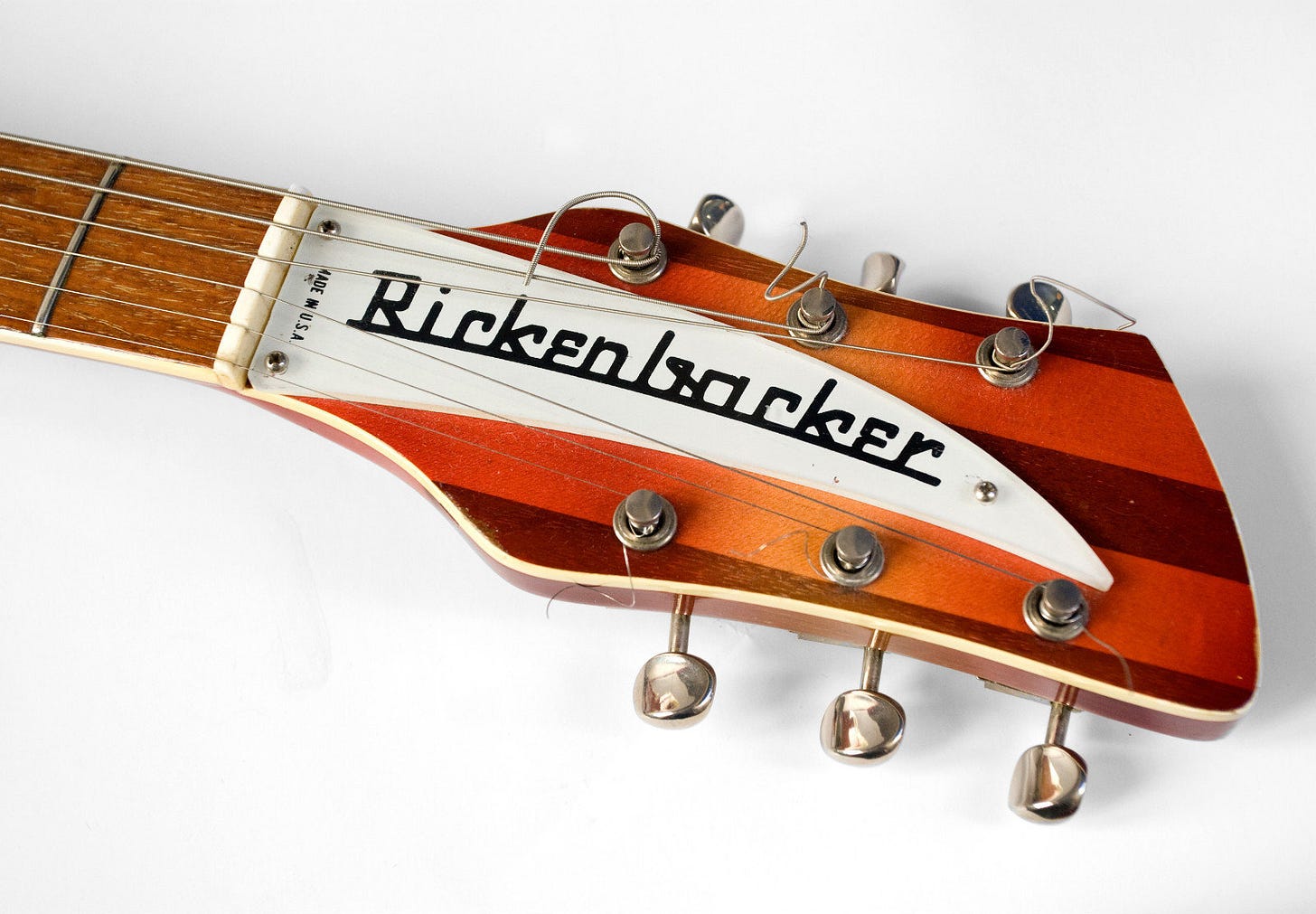
Just simple white binding this time, it still gave the 360 an elegant look. And when the 360 headstock transitioned to the “Gumby” headstock in September, 1971, the binding came with it.

Wouldn’t last long, though. By the end of March, 1972, the binding was gone…never to return to the 360.
It would be a while before production bound headstocks would be back, but this time it would be on a guitar that truly followed the Gibson “bound headstocks = deluxe guitar” model: the 4002 bass.
Launched in 1977, the 4002 was a super deluxe model with figured maple wings, an ebony fingerboard, low impedance output, and…you guessed it, a bound (in black, this time) headstock.

Famously “rare as hen’s teeth”, you’ve probably never seen one in person. While production ran from 1977 to 1984, production was very low. That said, there are probably more of these than any other bound headstock model—but we’re probably only talking around 150 total examples tops.
And…that is it, in terms of production models with bound headstocks. Only three “production models”. So pretty rare indeed. That’s not to say there haven’t been some one-offs and oddballs along the way. Like, say, one of the earliest 1968 O.G. 381 prototypes.

Like the 6006 Banjoline of the same year, it featured single ply checkered binding.

To (almost) bookend the 381’s original production run, this odd 1972 Blueburst also featured a bound headstock—2-ply this time (and check out the very very late Van Ghent tuners!)
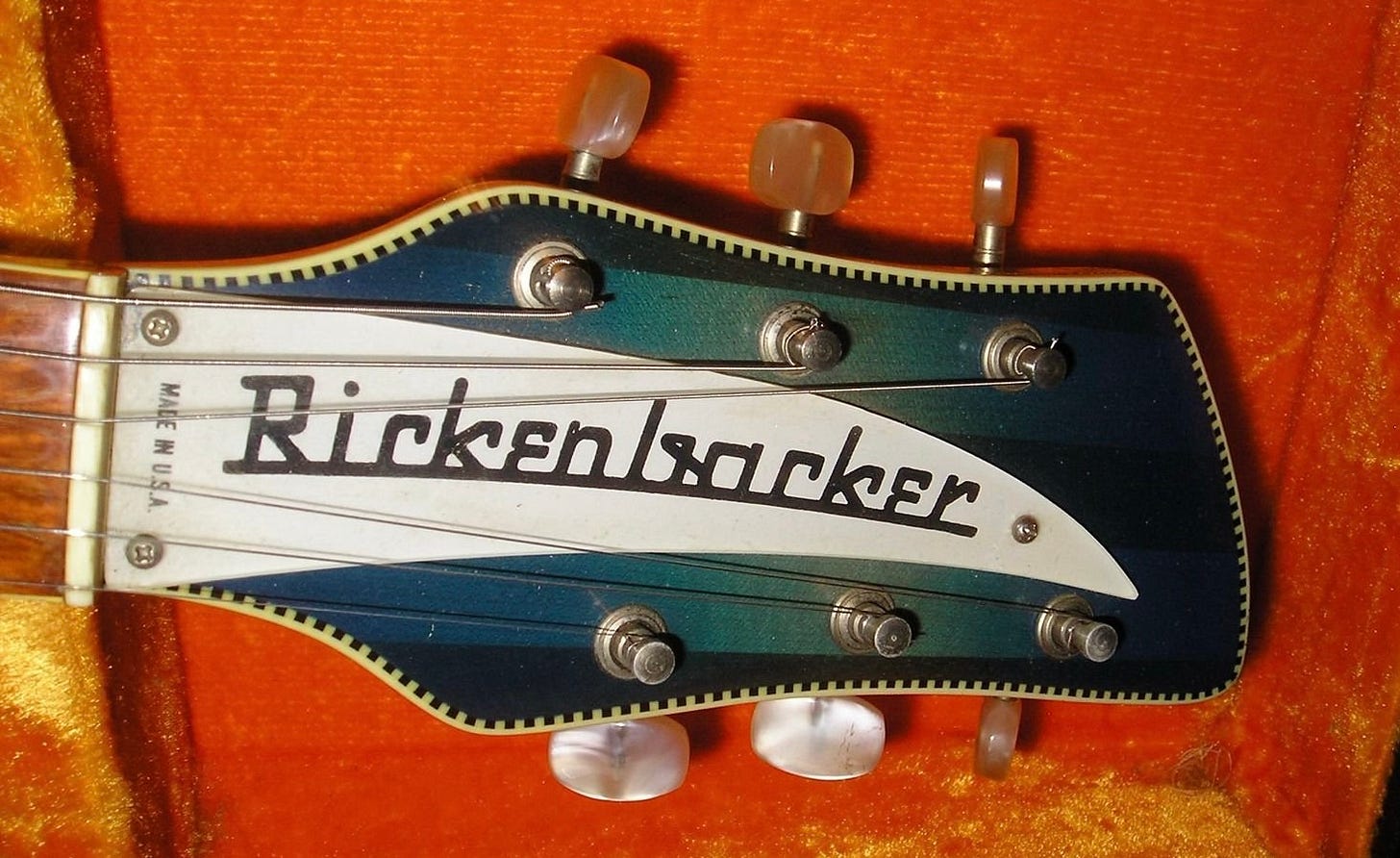
That’s not even the weirdest thing about this guitar, though. You’ve seen plenty of fake Gretsch “painted soundholes” (and even on at least one prototype Capri), but have you ever seen a “binding only” “soundhole”?
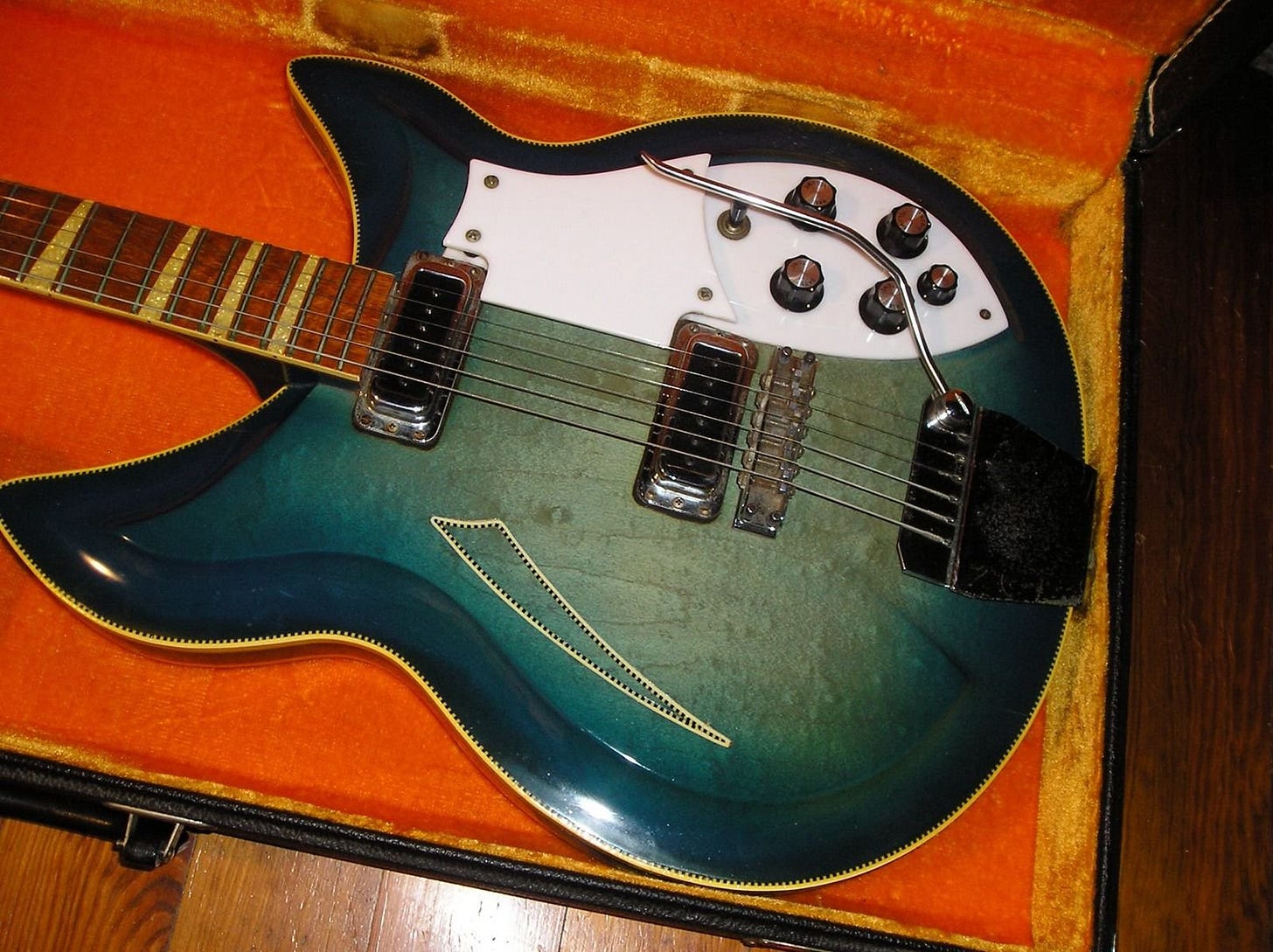
Now you have. In between those two was 1971’s “Mando Guitar”—another instrument that deserves a writeup here! As near as I can tell only two were made, and of those two one wore a single-ply checkered binding headstock.
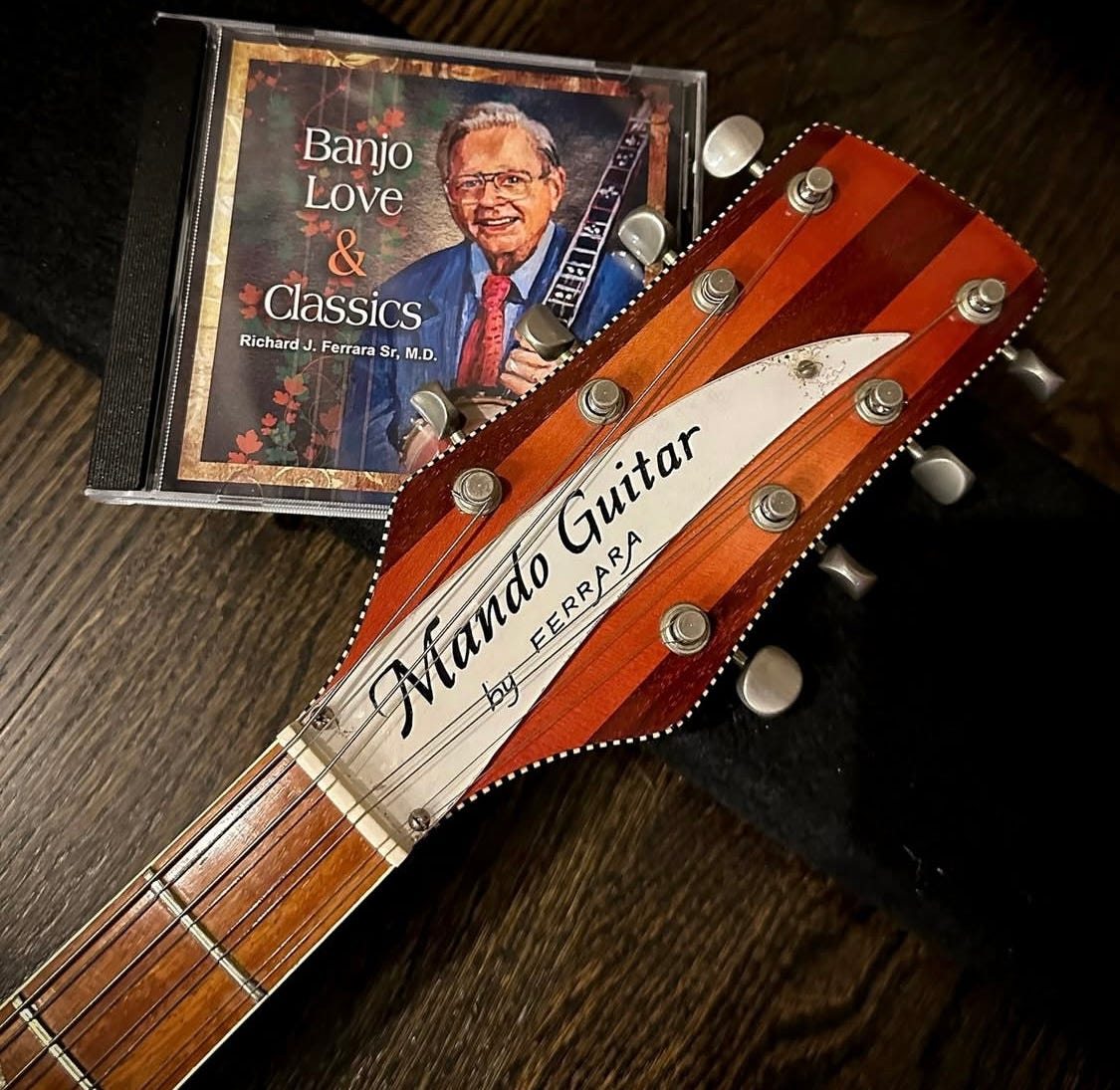
There were a number of “Glueglo era” (1971-72) 4001s (I’ve seen at least three) with weird necks—a wide center skunk stripe like you’d find on a 4005 and dot inlays. At least one of them is fretless—with a finished maple board to boot!—but the one thing they all have in common is a bound headstock.

And then there’s the 1974 4001SS:

Look a little off? That’s because it has dot inlays. Oh, and it’s short scale. And with a bound headstock.
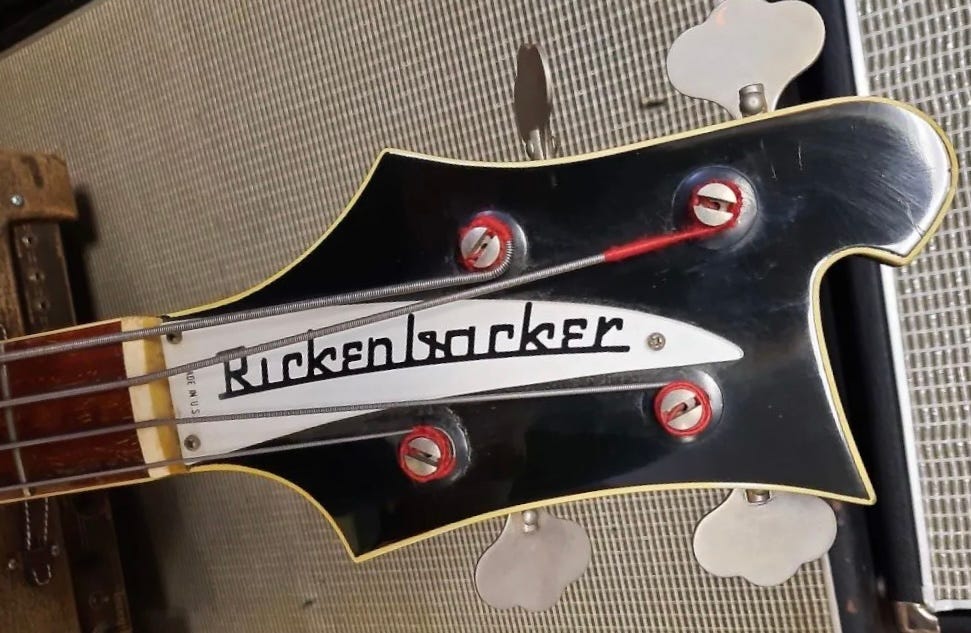
They only made a handful—probably less than five—and the “4001SS” is only an internal designation.
This is where it gets kinda tricky. So far we’ve talked about some early prototypes, we’ve talked about production models, and we’ve talked about some “verifiable” factory made oddballs. But starting in the late 1970s/early 1980s you could custom order pretty much anything you wanted, so there ARE guitars out there with customer requested “factory” bound headstocks. But there are also plenty with binding added after the fact—often by folks like Paul Wilczynski.
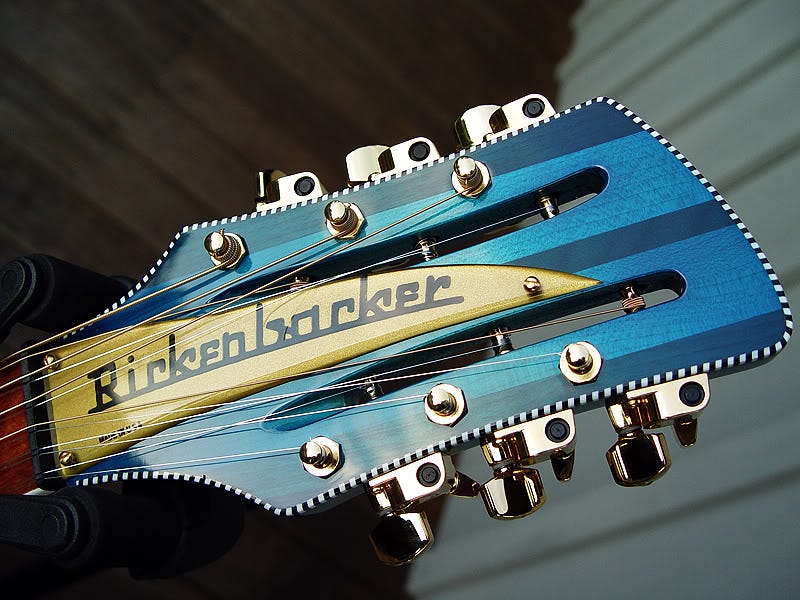
The point it it’s hard to know what’s factory versus what’s aftermarket. And even more importantly, up to this point we’ve been talking solely about Rickenbacker’s “intent”. So even though I can show you plenty of other one-off guitars with bound headstocks, most of those I know for a fact the binding was a specific customer’s request (like the white and purple burst 350s I know someone will bring up). So I’m gonna finish with one more where I KNOW for a fact it was Rickenbacker’s intent to equip the guitar with a bound headstock. We’re talking about the Jazz-bo.
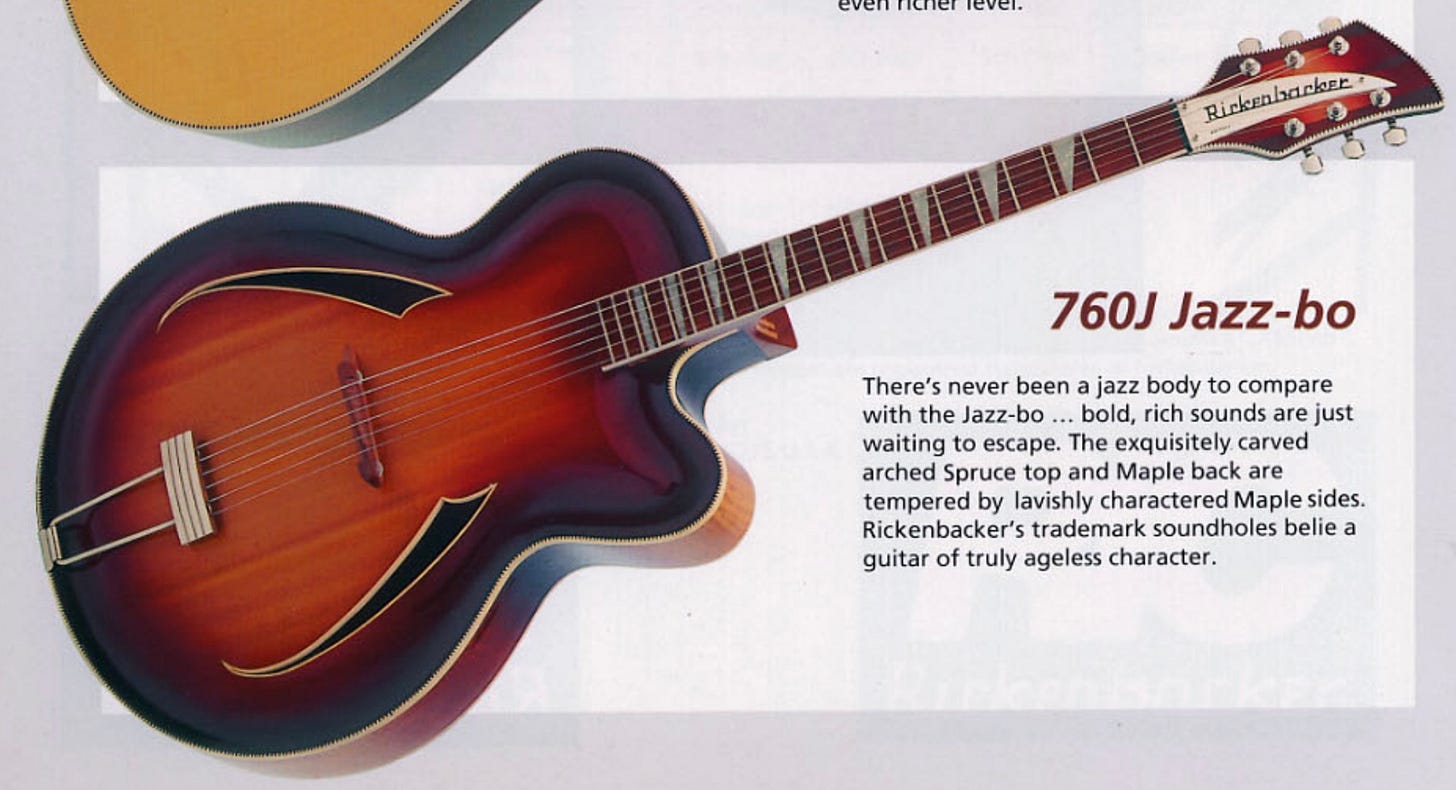
You’ll note that I call this picture a rendering, and that’s because it is. If you look closely, you will see it is the 1958 390 with a picture of a modern neck photoshopped on. That’s because it’s from a 1995 catalog and the Jazz-bo was vaporware at that point. But a real guitar was shown at the 2001 NAMM show, and here it is.
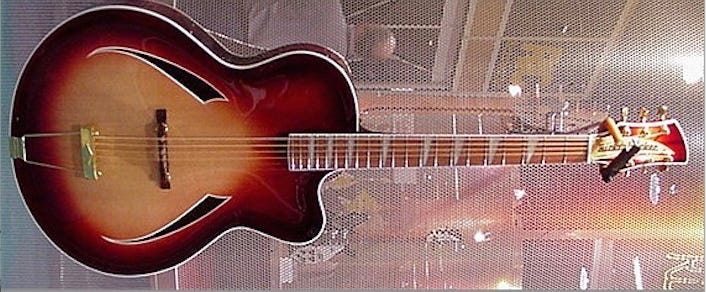
I’m sorry I can’t find a better picture of the headstock—and that’s the only official factory Jazz-bo that was ever produced. But it is bound, and Paul Wilczynski was authorized to build one, and here’s what his looked like:
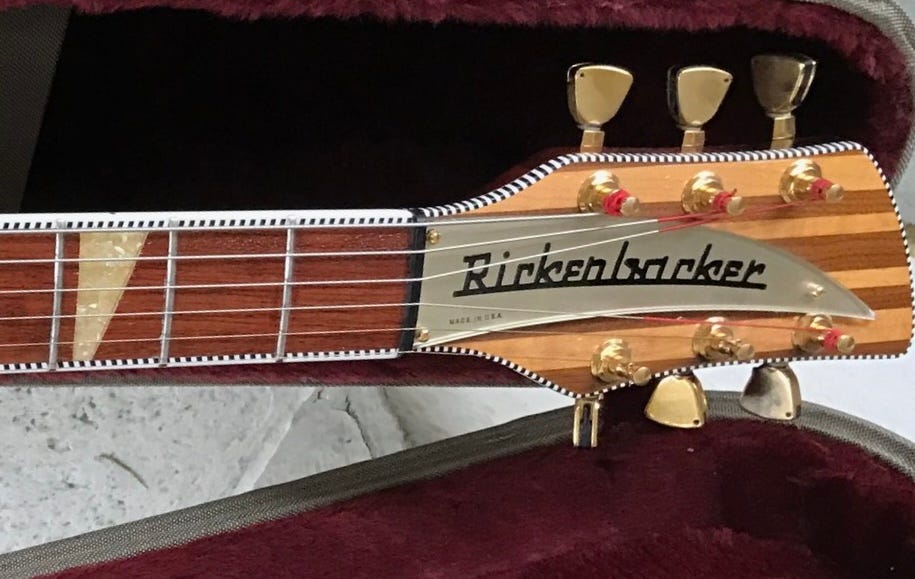
Close enough, I reckon!
And now we have covered the topic of bound Rickenbacker headstocks. Not a ton to talk about, but probably more than you realized. They’re rare, they’re special, and they’re cool!
Want to learn more about…everything else? Check out our handy site map to see what we’ve already covered. Got something you’d like to see covered? Drop it in the comments and we’ll add it to the queue.


This was one of my favorite posts yet! There was a guitar in San Antonio with the bound headstock a few months ago, but the rest of the guitar looked pretty worn. I'll try to find it and send it if you are interested.
Curious were the ‘57 proto 390 currently is today?